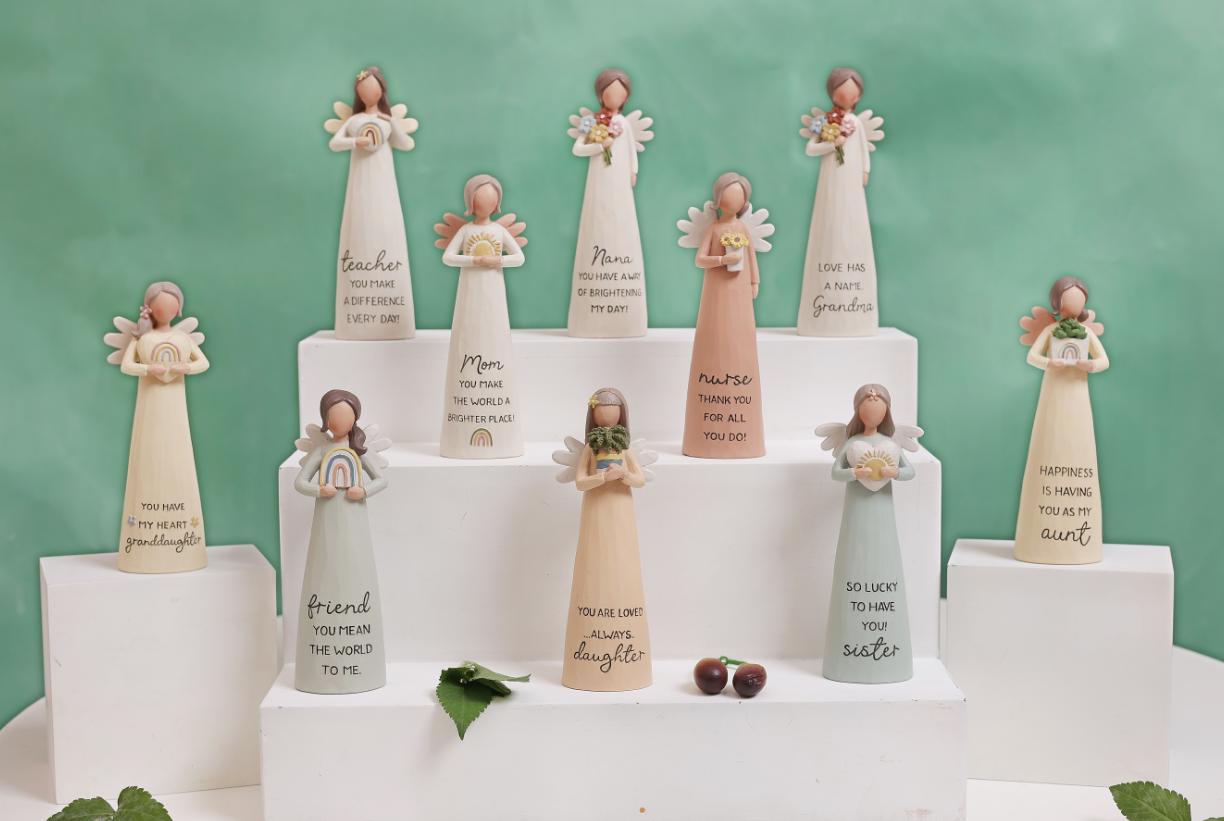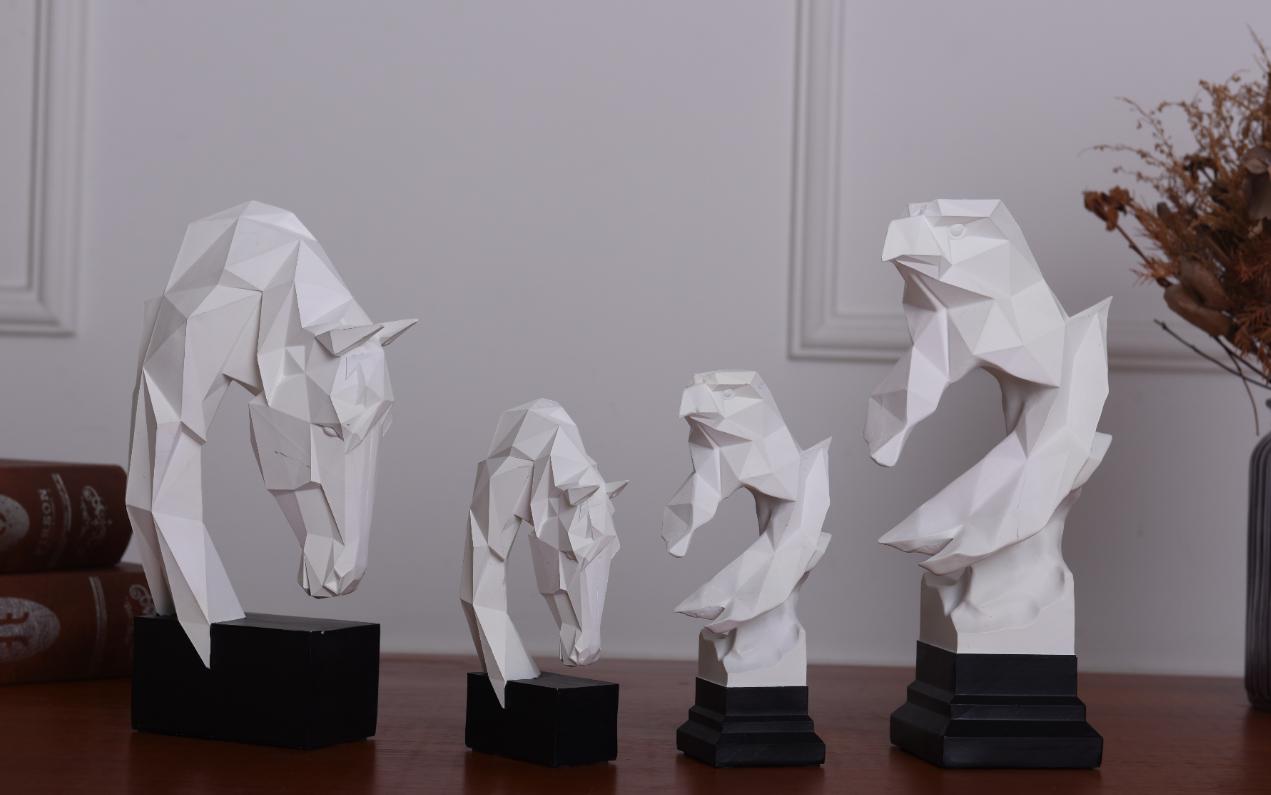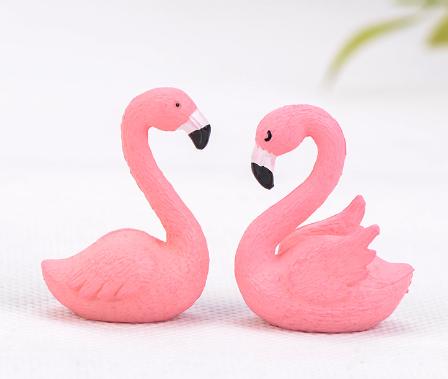Address
Floor 2, Building #1, Jindi Culture Square, Jinhuai Road, Fengze District, QuanZhou, China.
When discussing the differences between resin and plastic crafts, we not only uncover the fundamental distinctions in materials and manufacturing processes but also appreciate the unique artistic value and aesthetic pursuit encapsulated within resin crafts. Widely acclaimed for their material characteristics and intricate production process, resin crafts exhibit an irreplaceable charm across various settings.

Resin crafts primarily utilize synthetic or natural resins, materials that not only inherently possess excellent transparency and gloss but can also mimic the appearance of various natural and precious materials like jade, metal, and even pearl textures through coloring and the addition of various fillers. This versatility and malleability impress both visually and tactilely, endowing products with limitless possibilities and imaginative space.
In contrast, although plastic crafts also offer some degree of malleability and color diversity, their commonality and industrial characteristics often render the finished products lacking in the depth and warmth found in resin crafts, making it challenging to achieve the same level of artistic effect.
The production of resin crafts often involves multiple steps such as hand sculpting, casting, sanding, and painting, each requiring the artisan's meticulous effort and creative vision. This unique manufacturing process not only ensures that each resin craft holds unique artistic value but also turns the craft itself into a vessel for the artisan's spirit and creativity.
Meanwhile, plastic crafts are mostly produced through mechanized injection molding, which, despite its advantages in production efficiency and cost control, typically lacks the finesse and individualized characteristics of handmade items, making it difficult to compare with resin crafts on an artistic level.

With the rise of environmental consciousness, resin crafts are esteemed for their use of environmentally friendly resin materials (such as water-based and bio-based resins). These eco-friendly resins are not only sustainably sourced but also have a smaller environmental impact during production and use. Additionally, the durability and longevity of resin crafts make them a more sustainable choice.
Although the technology for recycling and reusing plastic materials has improved, the environmental issues associated with plastic crafts remain a challenge. Especially today, as consumers increasingly focus on environmental protection, this issue becomes a significant disadvantage for plastic crafts compared to resin crafts.
Resin and plastic crafts, due to their distinct material characteristics and processing techniques, can be used to create a variety of product types. Here are some examples of common product types for each:
1. Decorative Items and Ornaments: Includes simulation plants, animal statues, abstract art pieces, etc. Resin's malleability and transparency make it an ideal material for creating these detailed decorative items.
2. Jewelry and Accessories: Such as necklaces, earrings, bracelets, etc., especially those resin accessories embedded with dried flowers, gold leaf, or other special materials, which have a unique beauty.
3. Home Decor: Includes photo frames, mirror frames, lamps, clocks, etc. Resin can be made into various textures and colors to match different decorative styles.
4. Collectibles and Memorabilia: Such as models, statues, and trophies, etc. Resin can replicate details finely, making it suitable for creating collectible-level artworks.
5. Functional Items: Such as pen holders, business card boxes, mobile phone stands, etc., combining practicality and aesthetics.
1. Daily Necessities: Plastic containers, boxes, bottles, etc., are widely used in everyday life due to plastic's lightweight and durability.
2. Toys: Plastic is a common material for children's toys, including puzzles, action figures, vehicle models, etc., which are colorful, safe, and durable.
3. Outdoor Products: Such as flower pots, gardening tools, camping equipment, etc. The water resistance and weatherability of plastic make it suitable for outdoor use.
4. Office Supplies: Stationery, folders, calculators, etc. The cost-effectiveness and lightweight nature of plastic make it popular in the office domain.
5. Decorations and Displays: Although plastic can also be used to make some decorative items and displays, it usually tends toward more practical or modern design styles.
While both resin and plastic have a wide range of applications, resin, due to its material properties, tends to be used for making finely detailed, higher artistic value crafts. In contrast, plastic is more often used for practical products and toys in daily life, with its advantages lying in cost-effectiveness and the convenience of mass production.

Overall, resin crafts, with their unique material properties, intricate manufacturing processes, artistic value, and environmental performance, occupy an irreplaceable position in modern life.
Copyright © 2019 Quanzhou Ennas Gifts Co.,Ltd.| All Rights Reserved
Hello, please leave your name and email here before chat online so that we won't miss your message and contact you smoothly.